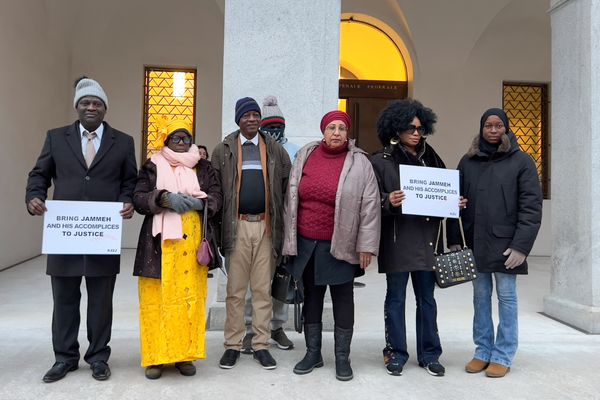
When Foot Locker Inc. (FL) CEO Mary Dillon strode up to the podium during the company’s Investor Day in March, she had good reason to feel confident.
The footwear retailer just reported a strong fourth quarter and overall year, which was perfect timing given the presentation she was about to make.
Dubbed the “Lace Up” strategy, Dillon and other top executives detailed a series of initiatives that would push Foot Locker’s overall revenue to more than $9.5 billion in 2026 from $8.5 billion last year.
It was a gutsy move. For publicly-traded companies, predicting anything since the pandemic has been a head spinning exercise. And given the inflation-driven flux of the U.S. economy, some retailers are only issuing the vaguest of guidance this year.
“It’s a tough time for any retailer to promise results,” said Carol Spieckerman, founder and president of Spieckerman Retail consulting firm in Bentonville, Arkansas.
Target Corporation (TGT), for example, says it expects comp sales for 2023 to be negative, flat, or positive, which pretty much covers every scenario.
In other words, what looks good on paper essentially gets blown up by real life. Which is exactly what happened to Foot Locker.
Last week, the company reported poorer than expected first-quarter results: same store sales fell 9.1% and overall revenue dropped 11.4%. As a result, Foot Locker’s stock has since plummeted.
Not a good start to the Lace Up plan. But it’s only one quarter and Dillon still has three years to hit her targets.
Foot Locker Needs a Stronger Digital Game
But here’s the big problem. There’s no way Foot Locker will generate more than $9.5 billion by 2026 if it can’t build a better e-commerce operation.
Given its strong social media presence, especially among those versed in “sneaker culture,” Foot Locker “should have a comprehensive, flagship digital platform,” Spieckerman said. “What they have right now is pretty doggone generic.”
According to its figures, Foot Locker generates only 17% of its annual sales from e-commerce, compared to 35% for the industry leader, which it did not identify.
The company also said that only 7% of its customers are “omnichannel,” meaning that they shop both digitally and in store. That’s important because Foot Locker estimates omnichannel customers spend more than three times more than people who shop exclusively online or in store. In fact, 45% of its digital sales are aided by stores.
At this point in the third decade of the 21st century, it’s fair to ask why major retailers continue to lag behind in building digital operations.
In Foot Locker’s case, the company has long been “entrenched in the brick and mortar market,” said DeAnn Campbell, head of strategy and insights for AAG Consulting. “They have been king of the mall. Foot Locker has been very good at physical retail. They hadn’t needed to invest in retail until now.”
Campbell, however, is actually bullish on Foot Locker. Despite its first-quarter problems, the retailer has the right long term approach, she said.
“The company is in great shape,” Campbell said. “Mary Dillon is brilliant. They are doing a lot of the right things.”
For example, the company is shifting its shops from traditional malls to more off-mall locations like lifestyle centers. The company is also designing specific formats for each of their retail brands, including Kids Foot Locker, Champs, and Atmos. To lessen the company’s reliance on national brands like Nike Inc. (NKE) and Adidas AG (ADDYY) Foot Locker is building out its private label portfolio.
And despite its digital shortcomings, Foot Locker knows that people still want to experience the sneaker in a store environment, Campbell said.
Foot Locker Faces Too Many Challenges
Perhaps. But the number one seller of apparel and footwear in the United States is Amazon Inc. (AMZN), which does not operate any physical stores.
According to a report by Coresight Research, apparel was the most popular category among shoppers who bought something on the site over the past 12 months. And among those apparel shoppers, men’s and women’s footwear was the most bought category.
“The e-commerce platform’s ability to keep shopper numbers high in the apparel and footwear sector despite high input costs and supply chain disruptions points to its higher resilience level compared to store-based clothing and footwear specialists,” the report said.
Spieckerman believes that Foot Locker faces too many challenges not to have a better e-commerce business. In addition to Amazon, the company faces competition from Nike, Adidas, and other shoe brands that operate their own stores, websites, and mobile sites.
And to drive loyalty programs, Foot Locker needs a strong digital game. The company estimates only 25% of its sales are loyalty sales, a number it wants to boost to 50% by 2026.
For her part, Dillon is still confident in her Lace Up plan, despite a rough 2023 that was clearly tougher than she thought.
“We knew this was going to be a reset year… but certainly more challenging than we thought at the time,” she told analysts last week. “We’re taking the right action but also continuing to focus on the future.
"As I think about the longer-term targets, the imperatives are intact. Examples like reaching 25% digital and 50% loyalty penetration, those are unchanged by the current macro environment.”






